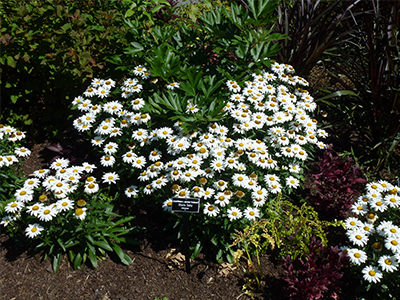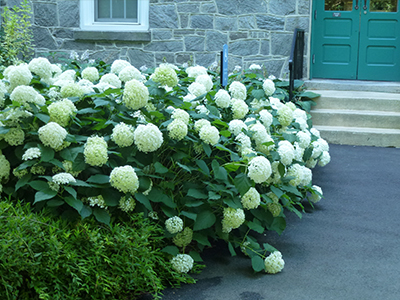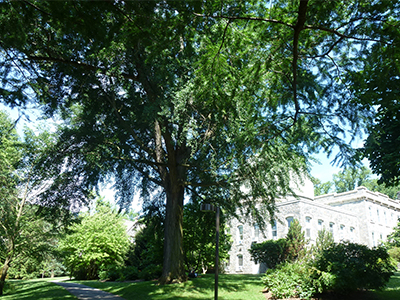Plant of the Week: July 11
Leucanthemum x superbum
Leucanthemum x superbum ‘Snowbound’, commonly known as the shasta daisy, is a beautiful white flowering perennial. Known as a “classic” shasta daisy is a very popular selection in landscapes. This perennial blooms in clumps, typically 2-3 feet tall and 1-2 feet wide. The ray and disc flower head consists of yellow disc flowers surrounded by white petals. This perennial requires full sun, and can grow in most soil conditions. Shasta daisy is non-invasive, and is also a good selection for flower arrangements. You can plant these directly by seed in the spring, start them indoors prior to spring, or buy them already in a container. Photo Credit: Michael Schneider
Hydrangea arborescens ‘Annabelle’, commonly known as Annabelle hydrangea, is a very popular white flowering hydrangea. The flower heads are very large, up to ten inches in diameter, and are pure white during their peak. The stems are also strong enough to hold the flower off the ground. Annabelle hydrangea requires moist soil conditions, and prefers partial sun but can tolerate full sun in wet soil conditions. The plant usually dies back during the winter, but new growth comes back quickly, and flowers bloom on new growth. Typically, these hydrangeas are pruned to the ground in the winter, or dead branches are pruned in early spring. The flowers bloom June through July, but occasional flowers can bloom until September. Photo Credit: Michael Schneider
Ginkgo biloba, most commonly known as ginkgo or maidenhair tree, is a large tree native to China. Ginkgo biloba is the only living species in Ginkgoaceae, and is one of the oldest living species in the world, with fossils dating back 270 million years. Ginkgo’s are known to live a very long time, up to 3,500 years, and are very tough, with many surviving the nuclear blast in Hiroshima. They are almost extinct in the wild, but are popular for ornamental use. Ginkgo’s are considered to be medium sized trees, growing 50-80 feet tall, with a spread of 15 to 30 feet. They require full sun, and are drought tolerant. The fall color is yellow, and female trees grow a fruit, which has a seed valued in Asian cultures for food. Photo Credit: Michael Schneider








Linda Doyle
Posted at 13:22h, 16 JulyVery informative. I do wish that you would routinely include information on the plant’s origins. Many of us have recognized the importance and benefits of using natives so this would be helpful to add.